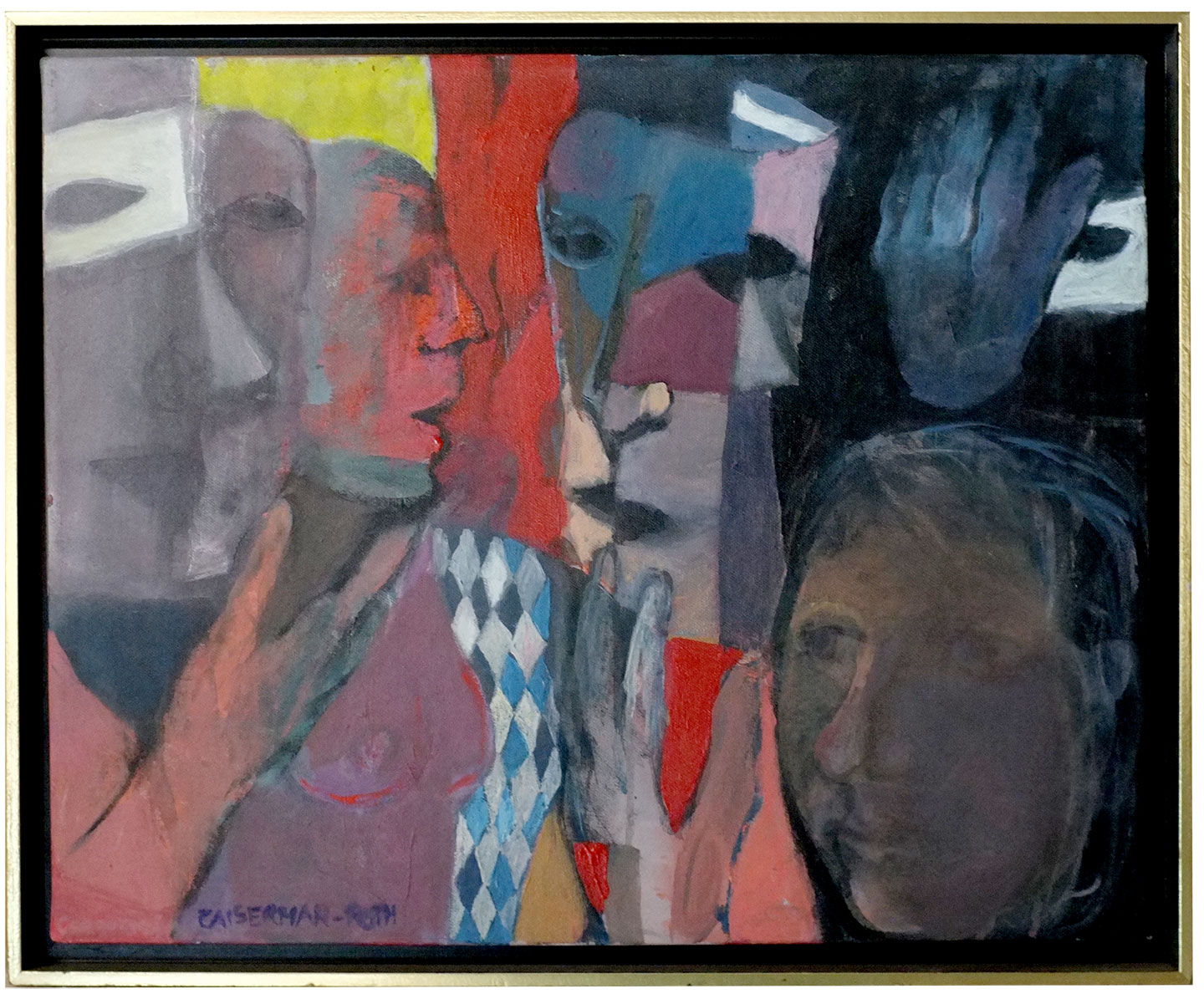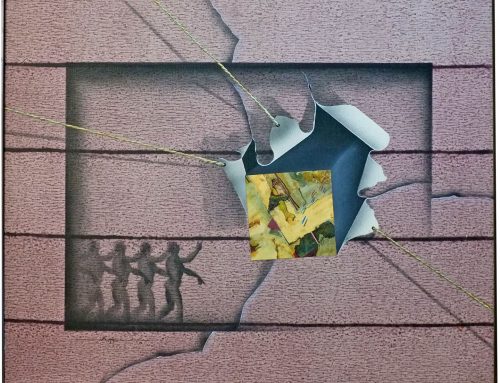Ghitta Caiserman-Roth was born in Montréal in 1923. Caiserman-Roth began her art career at the age of thirteen, when she received an honourable mention in the Annual Spring Exhibition of the Art Association of Montréal. By young adulthood much of her art was influenced by her experiences working in war factories in Montréal and Halifax, her work embraced the working class life and explored socialist themes.
She attended the Parsons School of Design in New York in1961 and the École des Beaux Arts in Montreal. She also studied under realist artist Moses Soyer at the American Artists’ School of the Art Student League of New York. In the early 1940s she was highly influenced by teacher Harry Sternberg, who encouraged her to address social concerns. She returned to Montréal in 1947, with Alfred Pinsky she opened the Montréal Artists School. A trip to Mexico in 1948 exposed her to the socialist mural movement, and she began incorporating mural forms into her work, once again exploring socialist themes. In 1950 she won an O’Keefe Award for her painting, Cityscape.
During the 1950s, she was became interested with domestic interior scenes, portraiture, and still life. Windows became a major focus in her work, symbolic of reedom but also alienation. She continued to address the themes of family and still lifes throughout the 1960s, also commenting on religious and social concerns. During the 1970s, Caiserman-Roth’s treatment of objects moved from expressionistic to a more surrealist style.
It is believed Caiserman-Roth’s studies in New York led to her work being characterized by strong social orientation and expressionist style.Her paintings rarely move into the purely abstract style, her figurative work is highly concerned with composition, light, colour and texture, often using the repetition of patterns to highlight the relationships between figurative subjects. In 1984 she had her first New York show at the Dyansen Gallery. She has taught at Sir George Williams University and the Saidye Bronfman Centre. As well as at Concordia University and the Saidye Bronfman Centre for the Arts in Montréal. She taught briefly at Queen’s University in Kingston, Ontario, Mount Allison University in Sackville, New Brunswick, and the Nova Scotia College of Art and Design in Halifax, Nova Scotia.
Her work is represented in numerous Canadian public collections, including that of the National Gallery of Canada, and in 2000 she was awarded a Governor General’s Award in recognition of her accomplishment. Caiserman-Roth was highly influenced by a girl named Nella who was adopted into her family, Nellas family was lost in the Holocaust. Caiserman-Roth used dolls frequently as images of death, sometimes incorporating them with numbers that signify, in part, concentration camp serial numbers. An exhibition of her “flung dolls” was held in Germany in 1995. This theme of death and destruction has emerged numerous times throughout her work.
Caiserman-Roth is the winner of numerous awards, including the Canadian Centennial Medal, Canada Council Purchase Awards, the 1975 Purchase Prize and Best Graphic Image Award at the Ontario Society of Artists, the Ninth Annual Award for the Arts, I. J. Segal Fund, and the Living Nature 86 Prize. She is a member of the Royal Canadian Academy, the Conseil des artistes peintres du Québec, and the Conseil québecois de l’estampe. She died in November 2005.
- 1- 14- “DÉMASQUER ” 1992 Acrylic on Canvas 16 x 20″
- 1- 13-“CARNAVAL” 1992 Acrylic on Canvas 16 x 20″
- 2- 14- “DÉMASQUER ” 1992 Acrylic on Canvas 16 x 20″
- 3- 3- 19- “Where are the clowns” 1945 Oil on Canvas 36 x 24″









Leave A Comment